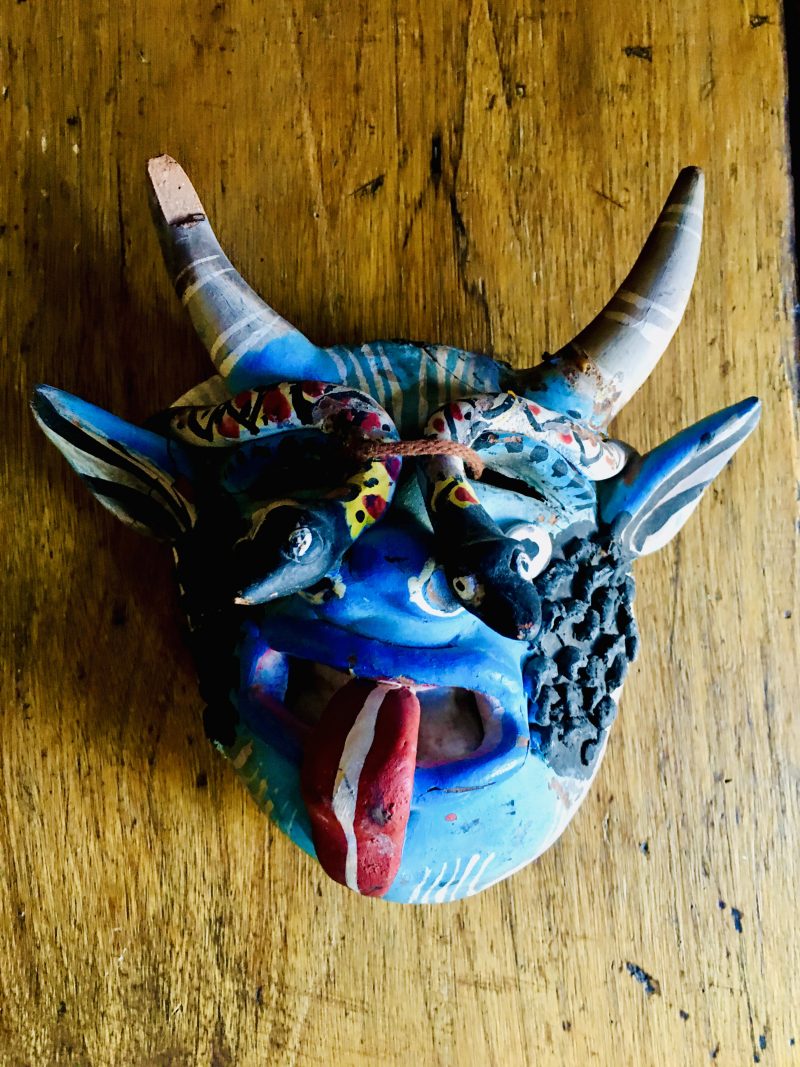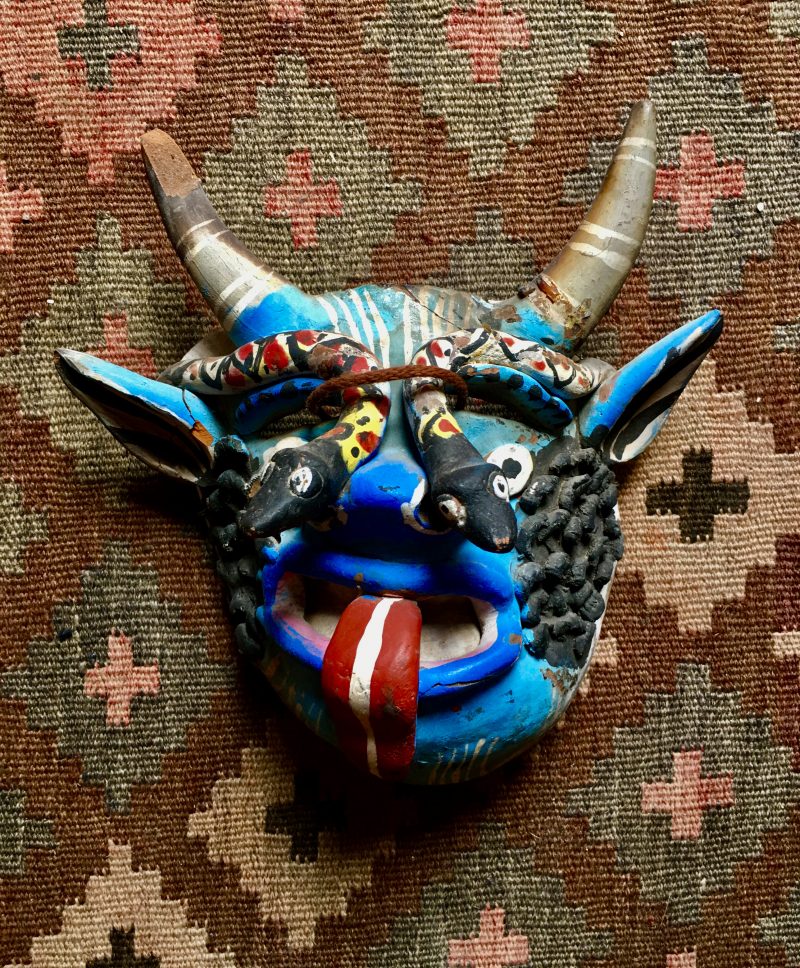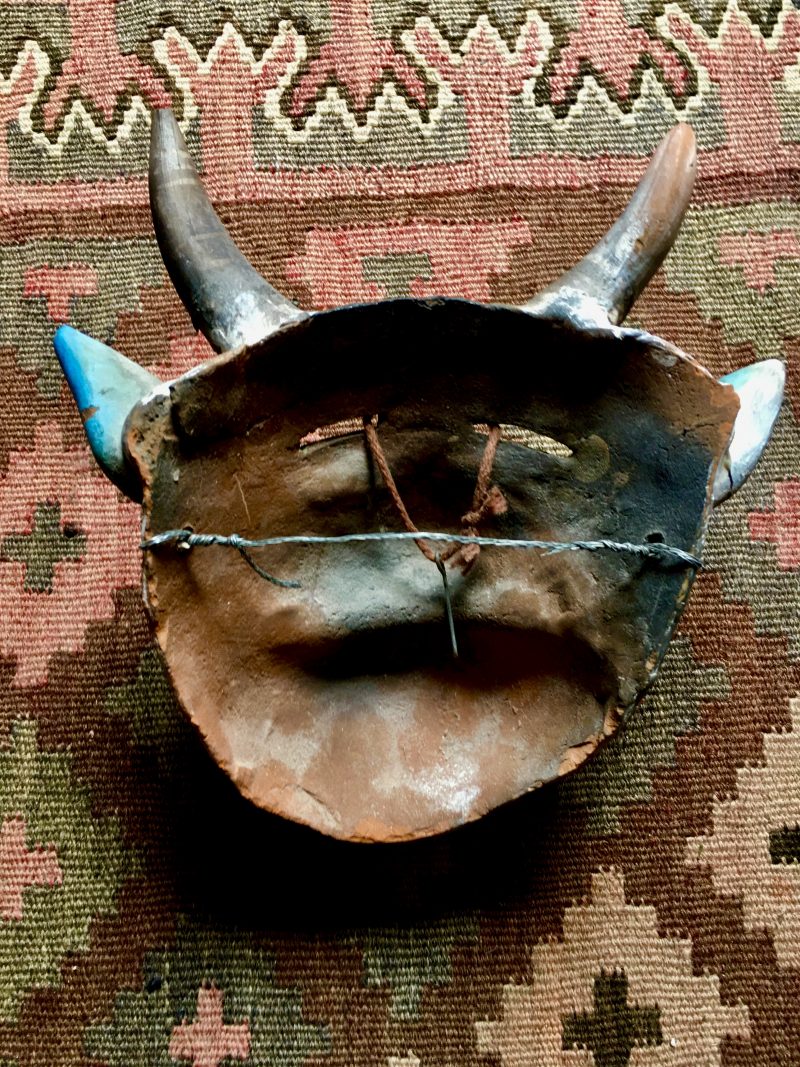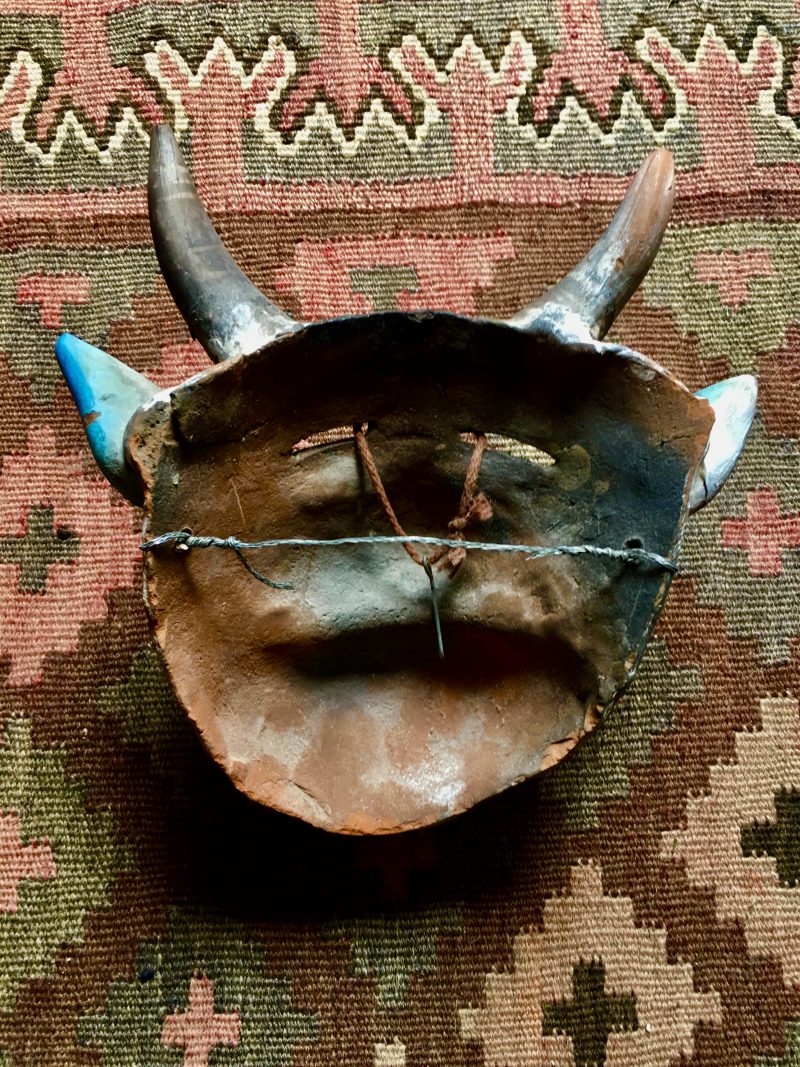Vintage Terra Cotta Mexican Folklore Diablo Mask with Horns & Serpents
Vintage Hand Made Terra Cotta & Hand Painted Mexican Folklore Traditional DIABLO (Devil) Mask & Horns with Tongue sticking out, and Serpents too. Madre Mia!
Acquired in a vintage shop in Mexico. Measures 8.5 inches width x 8 inches height x 4.5 inches depth.
Some repairs have been clearly done, yet this unique folk art has very much retained it’s charm.
Can be hung on the wall.
Asking $95.
Masks depicting devils and other fantastic creatures:

In addition to masks depicting humans and animals, other masks deal with the fantastic, abstract and supernatural. In the Nahua community of Zitlala, Guerrero, the mask for a ceremonial jester is red, with lizards on the cheek and sometimes the nose. Masks to indicate the indigenous in the Tastoanes dance often originally had scorpions painted on them, but evolved to include hooked noses and other grotesque features. Today the noses are made of wood and images of bikini-clad women are painted on. Skull masks have their origins in the pre Hispanic period. The depiction of death in pre Hispanic Mexico was not fearful but rather part of life. Skull masks represent death still, and can be basic white or with fanciful decorations. Some are serious and others are laughing. Some masked characters represent abstract concepts such as time and the Seven Deadly Sins.
However, the most common fantastic masks are those which depict the devils, demons and Satan himself. These vary from near normal human faces to those with wild and/or grotesque features, with human features, animal features or both. Depictions of old pre Hispanic gods remain in masks. Tlaloc was commonly depicted as having serpents around his eyes and with the fangs of a viper. These elements can be found in devil masks today. Tezcatlipoca was a night god, whose colors were black and red. These are also applied to devil masks.
Depictions of demons/devils have been adopted to various dances and rituals from morality plays to satires.
Satan appears in dances such as Los Tecuanes and Moors and Christians as well as in Carnival celebrations. Christmas pageants called pastorelas have masked devil characters that try to keep shepherds from seeing the Baby Jesus .
Types of Masks
Masks in Mexico vary tremendously, with masks for the same dances changing from once village to the next. These mask depict human beings, including famous people, animals, supernatural beings, abstract concepts, aliens and fantastic creatures. Some masks combine elements from different categories.
Masks range from the crude to ones with detail to make them seem like real faces. Most masks are scaled to fit the human face, with dancers looking out slits just above the painted eyes. The smallest masks measure between ten and fifteen centimeters wide with the rest of the face, including the mouth, covered by cloth. Other masks are much larger than the face, with the wearer looking out the mouth of the mask. Some masks have movable parts such as lips, tongue and eyelids to make them more animated.
Masks have depicted the three races of Mexican history, indigenous, European and African. Masks with Asian features can sometimes be found along the Pacific coast, where immigrants from China and the Philippines settled. The majority of Mexican masks depict human male faces, especially those for Carnival, Holy Week, Day of the Dead and local saint festivals. Many of the human masks are realistic, and faithfully reproduce various facial types. Others are so stylized that facial figures are only suggested. Expressions vary depending on the character being portrayed.







